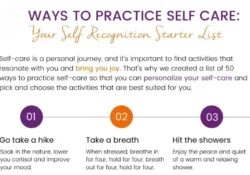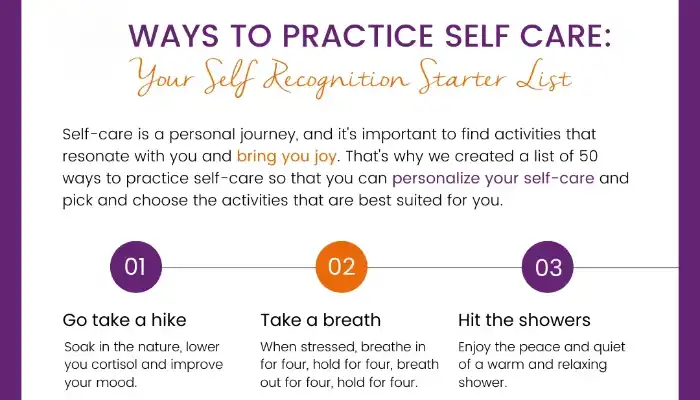Is Networking Essential for Career Success?
In today’s competitive job market, the whispers of “who you know” often echo alongside the importance of “what you know.” It begs the question: does networking genuinely pave the way for a successful career, or is it overrated socializing? This article delves deep into networking as a concept, its various forms, potential benefits, and the ongoing dispute regarding its inevitability.

Understanding The Networking Landscape
Before we get into any arguments, let’s first gain a clear insight into what networking means. In simple terms, networking involves creating and maintaining professional contacts. These could be formal or informal associations, either in person or through online platforms.
Formal Networking: This can involve going to industry events, conferences, or even professional association meetings.
Informal Networking: Also at social events, one can have valuable encounters with friends from work or former schoolmates.
The Power of Connections: Unveiling the Benefits of Networking
Networking is not only about exchanging business cards and having small talk. Here are some compelling reasons why building a strong network can be a game-changer for your career:
- Hidden Job Market: Many vacancies are never advertised publicly; they are filled through referrals within networks and leaks of inside information throughout networks. A reliable network will enable you to access such hidden opportunities in employment.
- Building Your Brand: Networking provides an outlet for showcasing your skills and expertise to more people. Positive interactions leave lasting impressions that build your reputation among colleagues in your field.
- Mentorship And Guidance: Connecting with experienced professionals offers invaluable mentorship and guidance from them. These mentors will give advice on careers, share insights from respective fields, and even recommend one when that opportunity comes up.
- Staying Current: Networks offer great opportunities to learn about new developments within one’s industry. Discussions amongst individuals in similar jobs may keep one ahead of others by providing insights required to succeed in their chosen professions.
Networking: The Key to Success…or Just Hype?
Everyone acknowledges the perks that come along with networking, but some people are still arguing whether it is necessary for a successful career. Take a closer look at the two sides of the coin:
The Networking Champions:
Networking supporters often have examples of how some individuals got their dream jobs or earned promotions that changed their careers because of contacts they made within their network. These proponents assert that in situations where the job market is competitive, having someone to support your skills and advocate for you significantly increases your chances of being successful.
The Networking Skeptics:
Opponents, on the other hand, argue that overemphasizing networking creates an unfair advantage for those with established connections and may sometimes overlook equally competent candidates who lack strong networks. Besides, there are concerns that individuals decry networking as concentrating on who one knows as opposed to what one knows, thus undermining personal competence.
The Networking Balancing Act:
Reality may fall somewhere in between, like two sides of a coin. Networking is important in advancing your professional development, but this must not overshadow the importance of mastering your skills, gaining relevant experience, and proving through performance in work that you are an expert.
The Challenges And Considerations Of Networking
Creating a strong network takes time, effort, and a genuine interest in connecting with others. Here are some potential roadblocks to consider:
- Time Commitment: Attending networking events or building relationships requires dedication; it may seem like a waste of time, especially if it happens during an already packed-up work schedule.
- Authenticity vs. Opportunism: The art of balancing between creating genuine connections and appearing highly opportunistic is important.
- Ethical Considerations: One must never compromise his/her own values through networking. Avoid defaming others or using relationships for selfish interests.
Building the Bridge: Strategies for Effective Networking
The act of professionals getting connected to jobs is what networking is all about. This chapter will focus on strategies that can help in building networks, from identifying networking opportunities to sustaining valuable connections.
A. Identifying Networking Opportunities:
Networking isn’t restricted to fancy industry events and formal conferences; there are contacts that are worth making everywhere! There are some suggestions here: In your workplace, nothing can be more important than establishing friendly relations with other employees who work in different departments. Try to attend any company events, become a member of some internal committees, and find mentors within the organization for the sake of widening your network.
- Industry Events: Attend any workshop, seminar, or conference related to your field. At such a platform, you will have a chance to come across professionals with similar interests as yours and thus share ideas.
- Professional Associations: Joining professional groups provides an opportunity to connect with peers, participate in industry debates, and probably get assistance from potential mentors.
- Volunteer Activities: Donating oneself is beneficial not only to the community but also as far as networking is concerned because one meets people from different walks of life who may have varying fields of expertise.
B. Crafting Your Personal Brand:
Your personal brand is your professional reputation. Create a clear and consistent image showcasing your skills, experience, and values. By doing so, you create an opportunity to:
- Maintaining a Professional Online Presence: It is important to always have your LinkedIn profile up-to-date, displaying your accrued skills and accomplishments effectively.
- Content Creation: Share insightful articles or blog posts or get involved in online forums relating to your field of specialization to prove what you know and add value to industry talks.
- Elevator Pitch: Craft out a concise yet compelling statement summarizing one’s expertise as well as career aspirations.
C. Leveraging Social Media and Professional Platforms:
Social media platforms such as LinkedIn and Twitter are valuable networking tools. This is how to make the most of them.
- Connect with industry professionals: Start by connecting with influential figures in your field, most admired companies, and potential employers. Following them helps you to know their recent activities and ideas while equally creating opportunities for meaningful interactions and networking.
- Join relevant groups and discussions: Participate in conversations or groups that align with your career path or interests. You demonstrate your expertise actively when you participate; hence, you get to interact with people of the same ideals, thereby expanding your network in the process.
- Share industry news and insights: Share beneficial content that adds value to your network. These could be research papers, reports, or personal perspectives on developments in the sector. When doing this, it makes you appear as an informed professional and thus becomes part of communication within your circle.
D. Networking Events and Conferences:
Don’t shy away from attending industry events! Here is how you can make the most of it:
- Do Your Research: Identify events relevant to your field and target companies that you are interested in.
- Prepare Conversation Starters: Have a few ice-breaker questions ready to initiate conversation with new connections.
- Follow Up: After the event, send personalized messages to the individuals you met, expressing your interest in staying connected.
E. Building Lasting Relationships: Following Up and Maintaining Connections
Networking is not an event for one instance only; it’s about having connections forever. Here are some tips:
- Send Follow-Up Emails: Thank people for their time spent together during networking sessions, showing that contact must continue even after a meeting has ended;
- Offer Value: Provide your network with helpful resources, industry updates, or even connect them with others who might benefit from their expertise.
- Stay in Touch: Periodically reach out to your network with a quick message or a congratulatory note on their achievements.
The Digital Age of Networking
Today, technology has changed how networking is done. Online presence offers unparalleled opportunities for global connection, but there must be a balance between virtual interaction and real-life engagement for effective networking.
A. Technology’s Impact: Networking was brought about by technological advancements, hence leading to a more globalized market. Online platforms facilitate communication, information sharing, and collaboration across geographical boundaries.
B. The Power of Online Networking Platforms:
- Professional networking sites: Some platforms like LinkedIn allow you to connect with professionals around the globe, find employment offers, and exhibit your proficiency to prospective employers.
- Online communities: These are forums and discussion boards that dwell on particular industries and offer a chance for fellowships with colleagues, information sharing, and learning from experienced professionals.
C. Balancing Online and Offline Efforts: However, it is important not to forget the power of personal meetings despite online networking. In addition, offline network events provide an environment where one can form stronger ties, gain credibility, and make lasting impressions.
Conclusion
Your success in your profession will depend on how strong your network is. As such, you can bridge opportunities by connecting through offline or/and online strategies. From industry events to social media engagement, cultivate valuable relationships that propel you forward along this journey. Networking is a continuous investment; hence, start today to get the most out of it since it becomes your biggest asset over time.



















